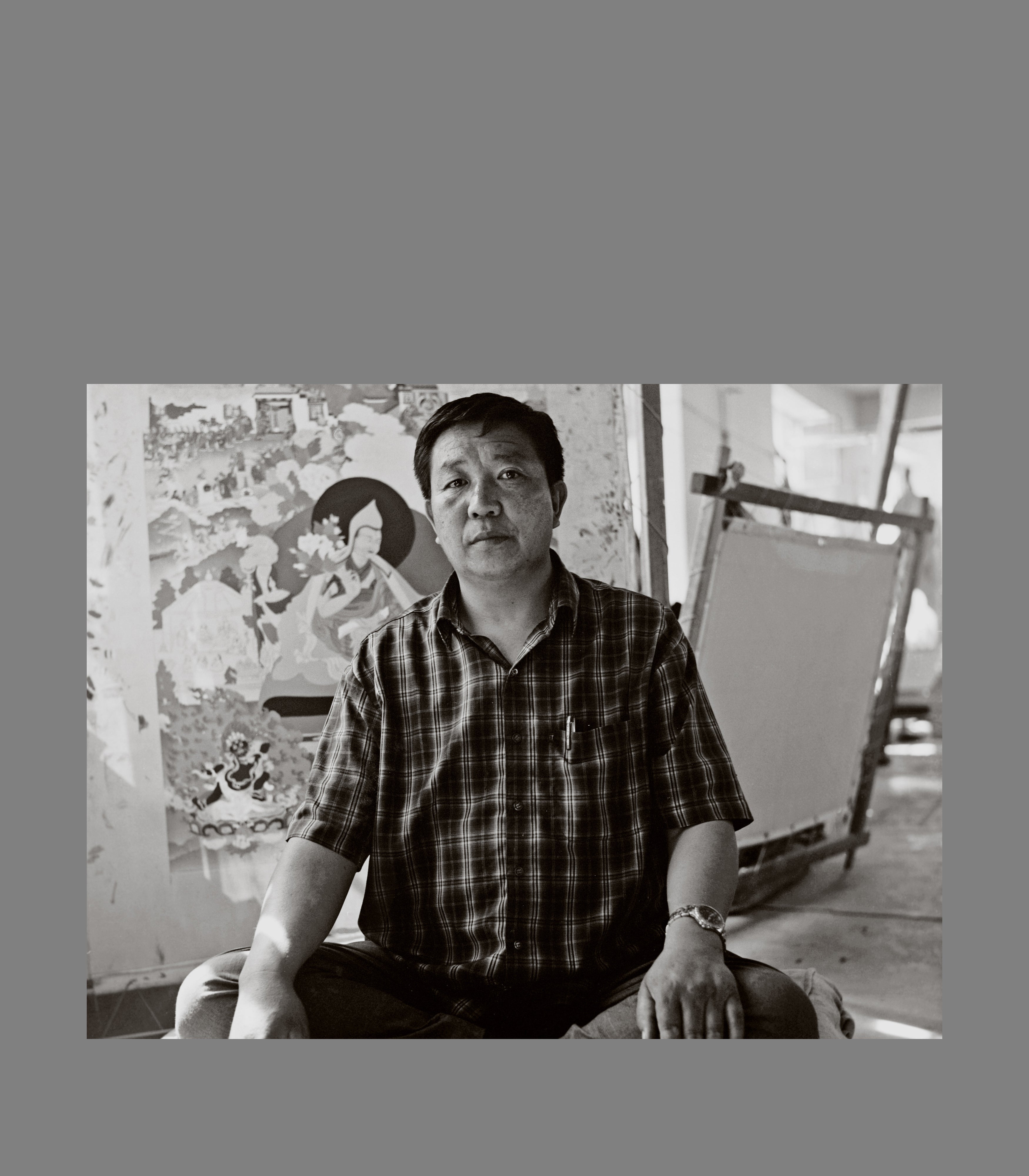
Master Thangka Painter
Temba Chöphel (1959-2007)
Temba Chöphel was born in Lhasa in January 1959, two months before the Tibetan uprising, and the absorption of Tibet into China. His family, from the landed aristocracy, suddenly found themselves at the bottom of the new social order. Temba, along with other children who had similar family backgrounds, was not permitted to attend school. His father taught him to read and write, and secretly apprenticed him to other recently disgraced members of society, first to the former head of the tailor’s guild, from whom he learned the art of appliqué, and then to a renowned thangka painter.
As a child growing up during the Cultural Revolution, he saw religious art being destroyed all around him, and secretly collected bits and pieces of statues others discarded, which he hid away as treasures to the great worry of his parents and teachers. In 1972, the political atmosphere began to change, becoming more moderate, and Temba’s training allowed him to participate in the first restoration of the Jokhang Temple in Lhasa. He continued to train with various artists during the period of cultural rehabilitation that continued through the 1970s, refining his practice and style to reach a high level of accomplishment.
In 1984, Temba Chöphel left Tibet for India, becoming a monk at Drepung Gomang Monastery, in South India. He joined Norbulingka institute in 1989 and gradually assembled around him many of his former apprentices from Lhasa. Tencho la, as he was known, was more than a thangka artist; he combined an extraordinarily wide-ranging artistic talent with an encyclopedic knowledge of Tibetan artistic heritage. He played a large part in the construction of Norbulingka, and then helped to establish standards for a thangka painting workshop, producing art of a quality that had not been seen for many years.
With his knowledge of many different artistic traditions, he was also instrumental in reviving Tibetan decorative arts, including traditional furniture making and ornamental painting. His designs became the hallmark of Norbulingka’s style, found adorning public areas and guesthouses, as well as in the home furnishings and accessories on display in its showrooms. Tencho la’s greatest accomplishments though were to the arts of thangka painting and appliqué.
He was fascinated with great projects of the past, ambitious series of thangkas and appliqué thangkas that could be several stories high, and initiated many such works by talking the potential patrons into ordering them. For such special commissions, he would spend hours researching the lives of those to be displayed and consulting erudite lamas, meticulous and thorough in his planning and design.
In 2002, he conceived the most grand project of all, one that unfortunately he was not destined to see completed. He envisioned a series of thangkas detailing the lives and deeds of the entire lineage of Dalai Lamas. This project was especially exciting as this would be the first series of thangkas which included the lives of all the Dalai Lamas. His Holiness the 14th Dalai Lama was approached, approved the project, and proposed hi patronage. Norbulingka’s research section extracted relevant information from the traditional biographies, which Tencho la poured over, and began to illustrate them. More than 10 years later, the project is in its final stages of completion.
This last project is a testament to how well Tencho la passed on his legacy. In the middle of the project, in 2007, Tencho la passed away, but the work has continued seamlessly, with an incredible end result. Under his careful guidance, over two hundred thangka and applique artists have been trained at Norbulingka since 1990. His main disciple, Tenzin Norbu, now heads Norbulingka’s thangka painting section, and Tsultrim Gyamtso who trained under him heads the Norbulingka appliqued thangka department.















